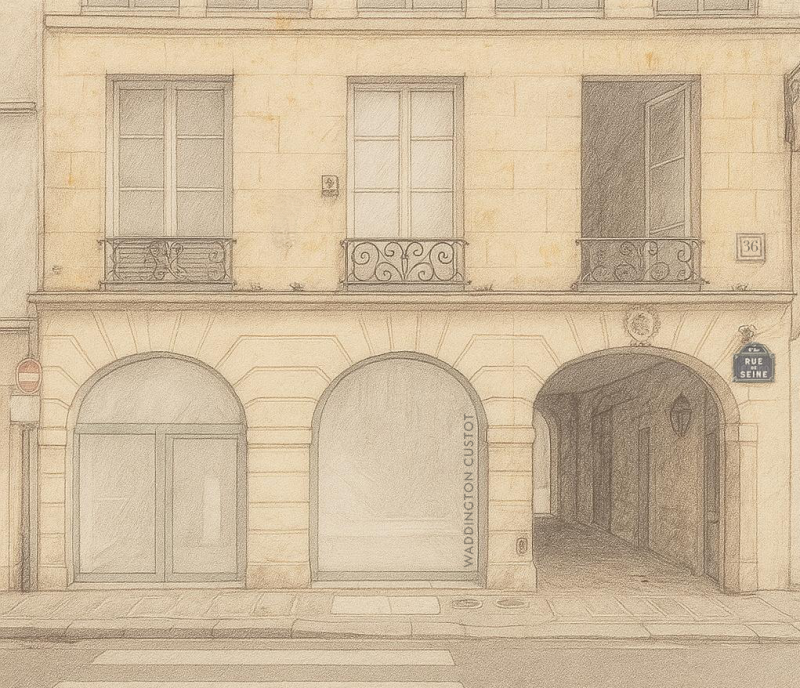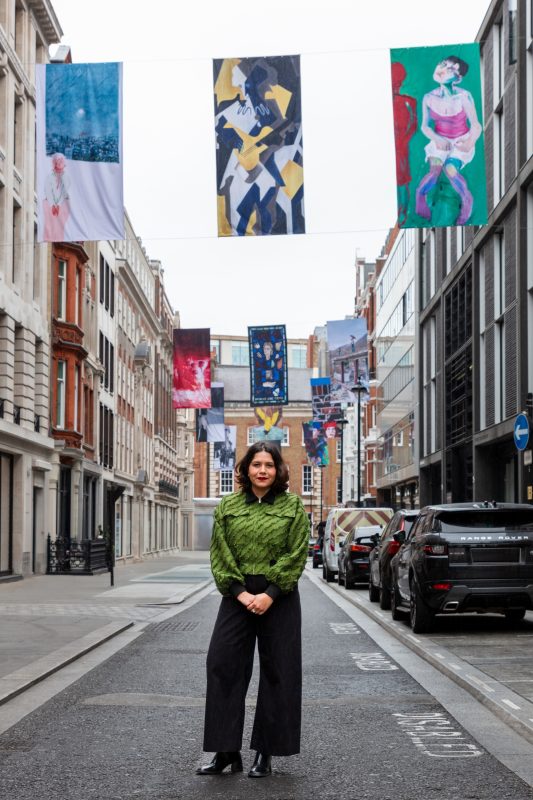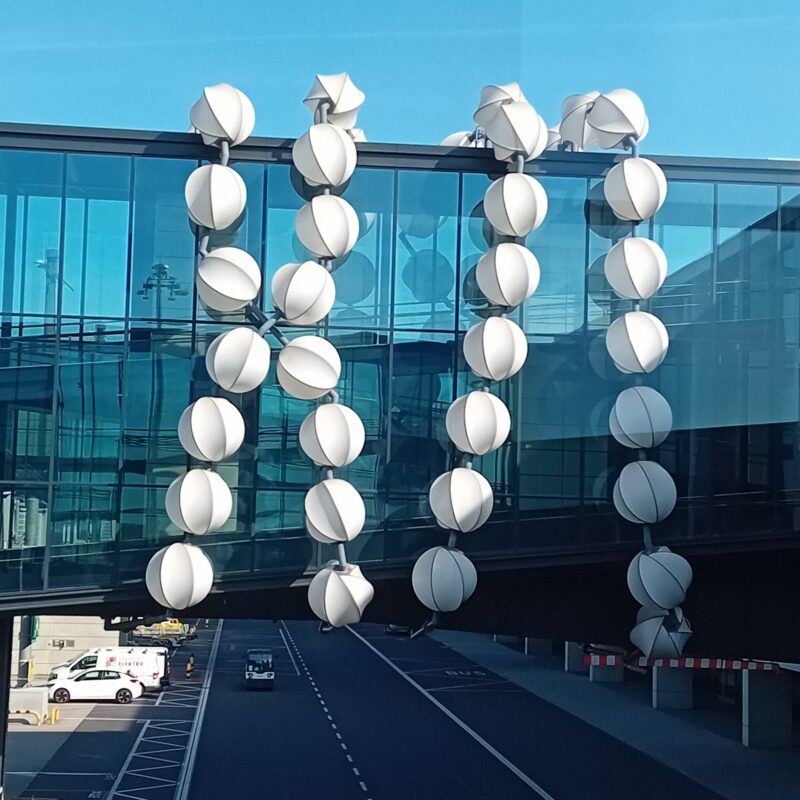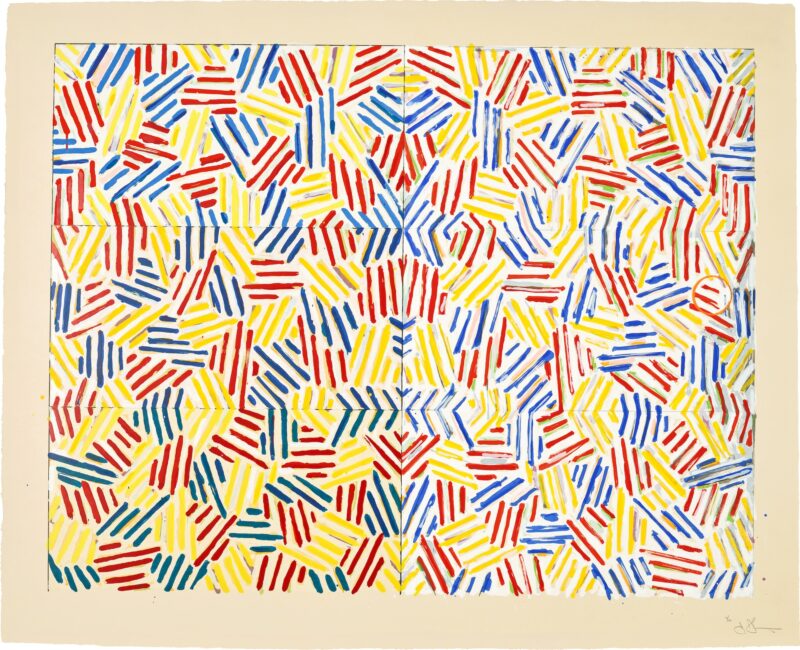Writings on the Wall examines the significant influence of ancient and contemporary graffiti on the practice of a group of mid-twentieth-century artists, who studied the ways in which ideas and speech have been communicated and recorded through inscriptions on the communal walls of the urban environment. The exhibition includes works by Brassaï, Vlassis Caniaris, Jean Dubuffet, Manolo Millares, Antoni Tàpies and Cy Twombly.
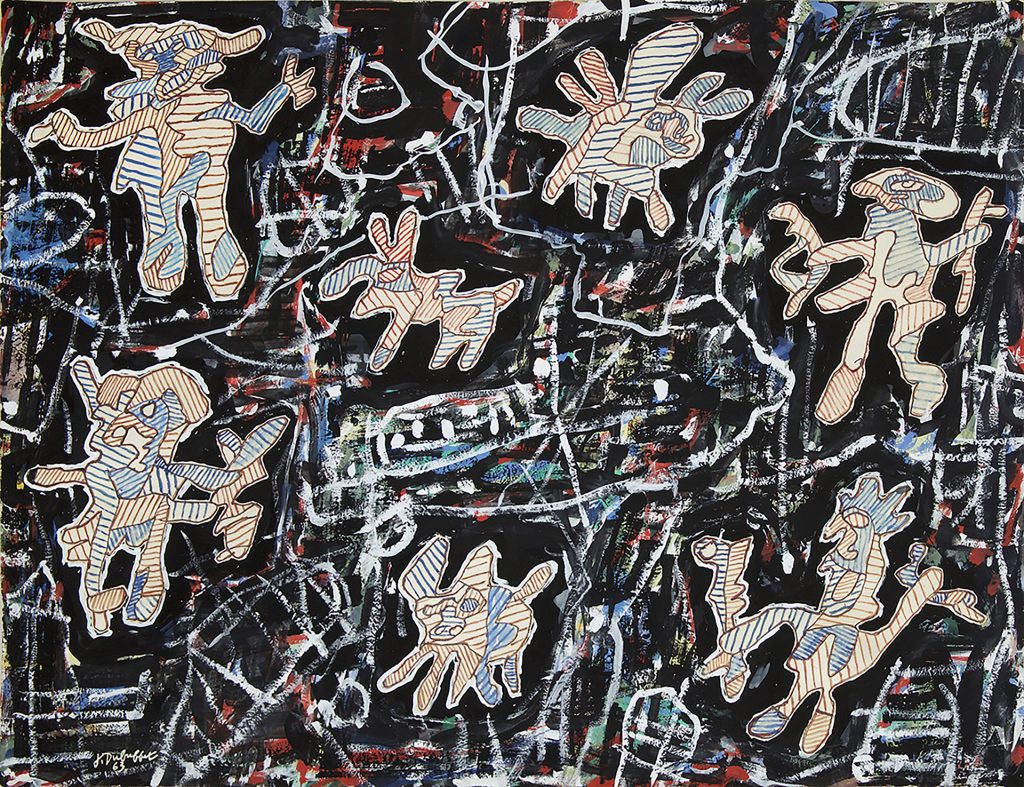
Jean Dubuffet, La chasse au biscorne (EG 77) 19 aou?t 1963, 1963, 57.7 x 75.2 cm Courtesy Waddington Custot © Fondation Dubuffet/ADAGP, Paris
The artists selected for the exhibition share an interest in ghettoised or so-called derivative art forms, developed outside the structures of art institutions. They are connected by a specific focus on calligraphic gesture and textual writing and employ certain characters, signs and symbols to emulate a mutual graphic language used to express human experience.
French-Hungarian photographer Brassaï (b. 1899, Brasov, Hungary; d. 1984, Beaulieu-sur-Mer, France) captured strangers’ scrawls and engravings on the buildings and walls of Paris over a period of three decades from the 1930s to the 60s as part of an extensive photography project. He approached the modern graffiti of Paris like an urban ethnologist, classifying signs and symbols, aligning it with older graffiti such as that of ancient Rome and prehistoric cave petroglyphs.
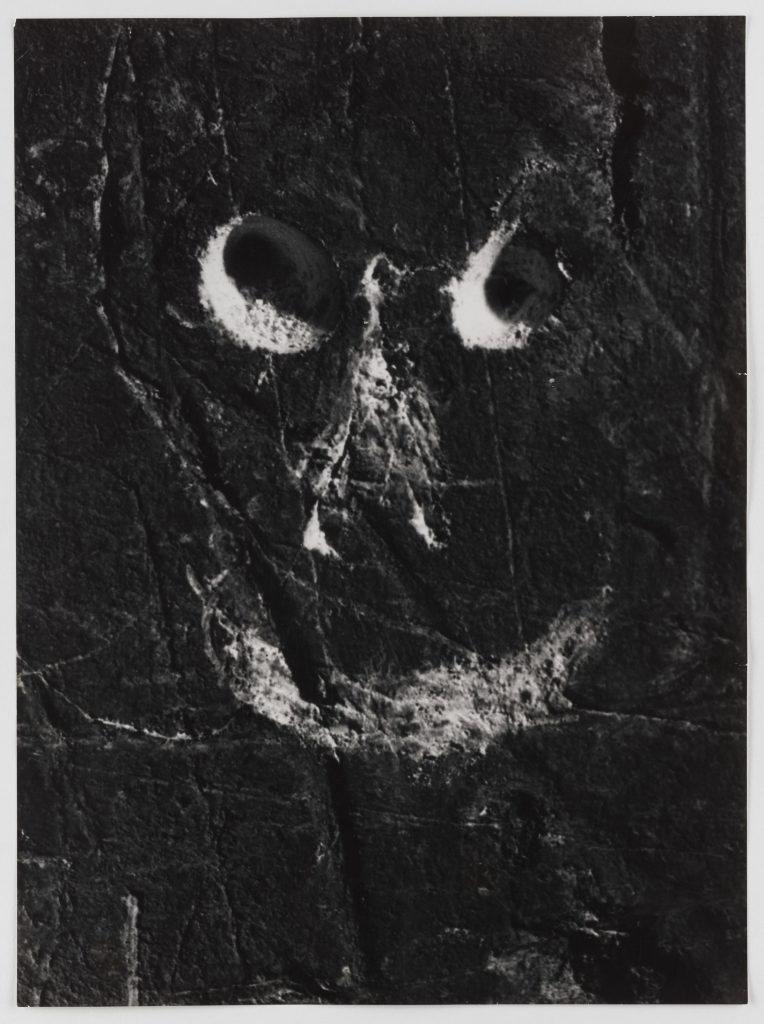
Brassai?, Graffiti (Se?rie VIII, La Magie), c.1956, 39.3 x 29.1 cm © Estate Brassai? Succession.
In 1944, Brassaï’s work was encountered by Dubuffet (b. 1901, Le Havre, France; d. 1985, Paris, France) who in the following year produced a series of lithographs, Les Murs (The Walls), to accompany a book of poetry by Eugène Guillevic. The lithographs celebrate the wall’s spontaneously recorded traces of love, hate, humour and self-assertion as a testimony to humanity’s lived experience. Dubuffet began to research and collect the work of marginalised groups making art on the fringes of society including the insane, folk and ‘primitive’ artists. Many of his later works embrace raw emotive scrawling and are composed with wall ‘matter’, mimicking rough city walls.
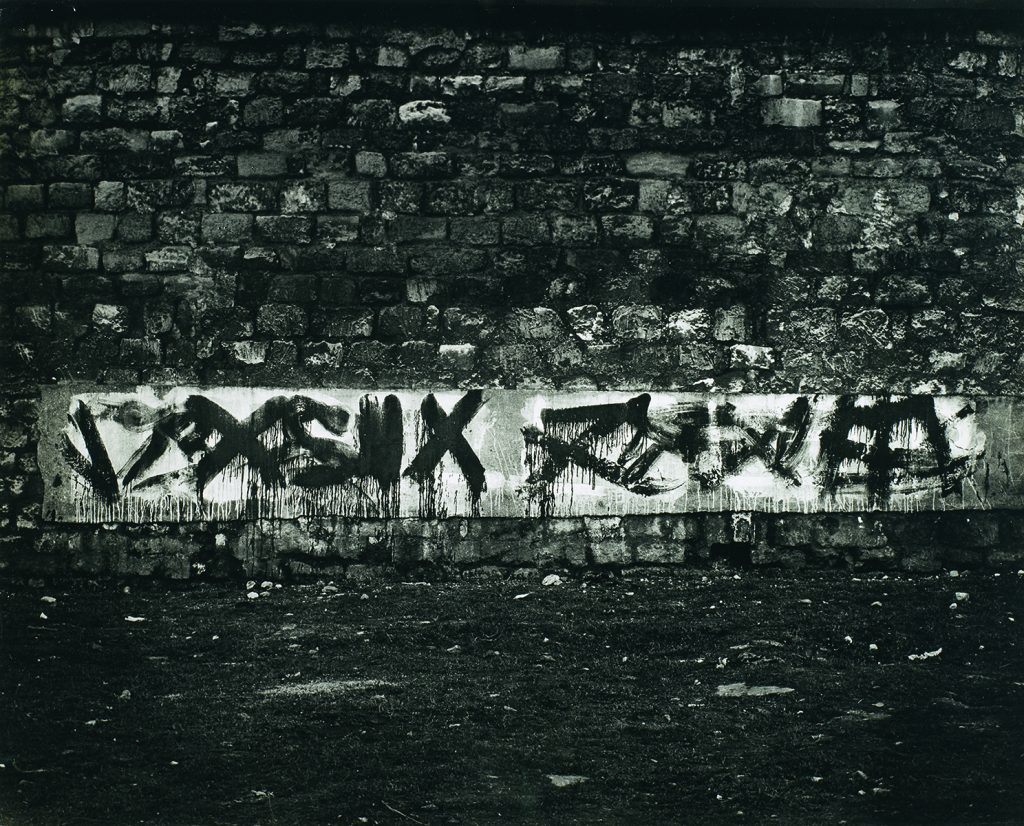
Brassai?, Graffiti de la se?rie II, Le langage du mur, 1940 silver gelatine print (c.1950), 40.2 x 49.6 cm © Estate Brassai? Succession
Brassaï’s photographs were also influential to Tàpies (b. 1923, Barcelona, Spain; d. 2012, Barcelona, Spain) who became aware of the existentialist theories which accompanied the reception of Brassaï’s work in 1950s Paris. Tàpies transposed the function of city walls onto his densely texured canvases, often marking them with raw graffiti gestures, crosses, ‘X’s and ritual and territorial marks. After a childhood disrupted by political turmoil, as Spain was cast between intermittent civil war and military dictatorship, Tapies’ understanding of walls as witnesses to martyrdoms and suffering reflects their role in the battleground between propaganda and protest, and their importance to personal declaration in the shared public realm.
Millares (b. 1926, Las Palmas, Canary Islands; d. 1972, Madrid, Spain), who became closely aligned with Tàpies, was particularly interested in the archaeological record of pre-historic symbols and cave paintings – the earliest ‘walls’. As a young boy, visiting the local Museo Canario in Las Palmas, Millares learnt of the cave petroglyphs and burial pits of the Guanches, a Neolithic people indigenous to the Canary Islands. For Millares, the ancient text and modern automatic writing held and harvested authentic meaning, and in the early 1950s, he began to inscribe calligraphic gestures and signs onto his canvases, reconciling pre-historic cave painting and European Surrealist automatism.
At around the same time in the early 1950s, the American painter Twombly (b. 1928, Lexington, Virginia; d. 2011, Rome, Italy), would undertake a number of trips across Europe and North Africa, and the ancient graffiti he encountered would inspire him throughout his career toward a deep appreciation for mark-making in all its forms. Twombly pulls together a wide range of references from Roman classical mythology and poetry, to isolated alphabet letters, the elemental signs of crosses, further reduced geometric shapes, and the meaningless line. In these works, language is deconstructed, emphasising the formal aspects of text and the performative act of writing itself.
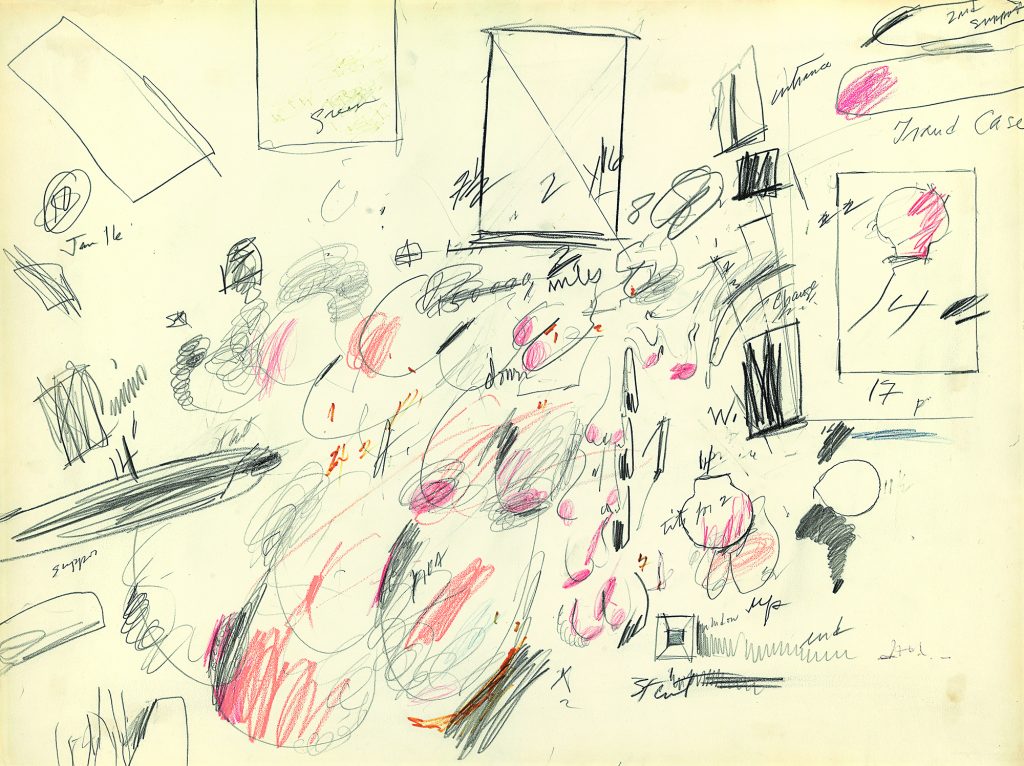
Cy Twombly, Untitled, 1969, 58.4 x 78.1 cm © Cy Twombly. Courtesy Helly Nahmad
Also included in the exhibition are works from Greek artist Caniaris’ (b. 1928, Athens, Greece; d. 2011, Athens, Greece) series, Homage to the Walls of Athens 1941–19… (1959), which directly reference the walls of a city in turmoil. Reflecting Caniaris’ experience of the civil war following the occupation of Greece during the Second World War, the works communicate the artist’s concern for political freedom, resistance and social welfare. Caniaris stated explicitly that his assemblages were intended to re-create the image as well as the feeling or impression of the walls of occupied Athens. Bringing together these pivotal artists operating across Europe in the 20th century, Writings on the Wall highlights the lasting significance in art of the written gesture as a method of communication from ancient to modern times.
The exhibition follows on from Waddington Custot’s successful 2018 exhibition, Invisible Cities – Architecture of Line, curated by Flavia Frigieri. Where Invisible Cities explored concepts of the ideal city, Writings on the Wall examines tangible and deliberate mark-making, drawn from the city and its infrastructure.
Writings on the Wall is at Waddington Custot from 17th May–30th June 2019 waddingtoncustot.com
